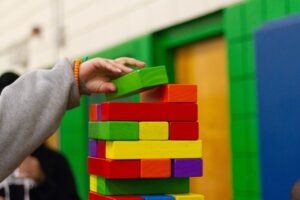Mathematics and Social Sciences: Teaching and Learning Supreme Mathematics
August 13, 2024

Scientists believe procedural differences between the physical and social sciences. They are not kind differences. The goal of supreme mathematics is to describe and summarize factual reality. The social scientist is not faced with any unique difficulties with the method. Compared to other scientists, they are not the same in sort. The use of mathematics as a communication unites the sciences in another way.
Mathematics in the Social Sciences
The analysis of numerals, evidence, and models is as mathematics. Math is in the social sciences to create quantitative representations of real-world occurrences. A procedure, an output, and the input settings are all part of mathematical structures. These elements enable the description of occurrences by mathematical models using input data. Recognize connections between various event components and plane predictions. Social sciences are a group of disciplines. They include politics, the past, sociology, finance, and so forth. They research human societies and interpersonal relationships. Specifying these criteria can be difficult. Social science data and criteria are not measurable. If an economist wants to know how relationships between various genders are by cultural standards.
The Social Sciences’ Linguistic
Any scientific subject, including social research, is on supreme mathematics and alphabet. In the fields of politics, sociology, finance, or mental health, for example. Every field uses a different vocabulary and terminology. To explain and examine social events. With its accuracy and generality, mathematics offers a universal language. It cuts over linguistic and cultural divides. the models, ideas, and terminology used in mathematics. Social researchers have the ability to convey intricate principles and hypotheses.
In the Social Sciences, Math Applications
- Social scientists can better understand social problems and queries. Concern communal living by using mathematics.
- Analysts examine market dynamics through the use of mathematical frameworks.
- Mathematical structures are by sociologists to address inquiries. On the interactions between people and human society.
- Calculated models are by political researchers. To analyze how voters respond to certain situations.
- To explain historical events and comprehend historical techniques, historians use mathematical diagrams.
Finance
Macroeconomics, the study of financial circumstances, is in economics, which examines market relations. The study of personal economic preferences is microeconomics. Accounting represents corporate and individual actions. As market situations using computational models. Economists can also establish equilibria and tie many financial variables. It is to one another using supreme mathematics numbers. Based on the trends seen in those models, make forecasts. The model is one example of this type. It states that the equilibrium price is when supply and demand are exactly equal. One may predict the economy using these models. These forecasts relate to trends in economic indicators. Like jobs as well as financial periods like boom-bust phases.
Study of Social Networks
Comprehending social networks is essential to sociology and psychological studies. Recognize the impact, behavior, and dissemination of information of people. The idea of graphs in the supreme mathematics chart in mathematics offers a foundation. It is for social network analysis and visualization. Researchers can map links, and identify important players. Find trends through social network study. It exists in a range of social formations, including organizations and partnerships. It can highlight the nodes of impact. Show how information propagates throughout a network. even forecast the chance of specific group actions.
The Psychology of Math
Therapists use mathematical methods to comprehend human thought processes and actions. Mathematical models and data are in mathematical psychology. It develops theories regard thinking, decision-making, and mental functions. Mathematical concepts are the foundation of psychometric evaluations. It is like personality assessments and IQ testing. They quantify and analyze individual variations. Furthermore, psychologists can investigate subjects. They like thinking, recall, and learning with the aid of modeling math.
Modeling
In Economics
The interconnectedness of the economy was a concern of classical economics. The cost of manufacturing, or the price of inputs, determines the price of goods. Output is what consumers are willing to pay at the time. Calculus was by Cournot to determine the prices and elements in his model. He developed the quantity demanded versus price formula.
F(p) = D
Predict the evolution of the Marshallian flexibility theory. They propose that using the demand difference to yield
F ′(p) + F(p) = 0.
Cournot went on to examine the most issues.
In Sociology
It is possible to represent implications from the standpoint of the game. Faden studied situations in which offenders and victims each followed their own logic. When there are no police, they collaborate. When there are cops and criminals, they collaborate because of the victims division. Such modeling is the tip of the iceberg in a complicated societal issue. There may be differences in three population sizes and distributions. The relationships between them, and their driving forces. For example, if we concentrate on the conflict. It is for survival between two groups, let’s say victims and criminals. The likelihood of the latter will increase as the former increases. It produces a basic system of simultaneous equations like
\( \dfrac{1}{v} = f(c) and (\dfrac{dv}{dt}) \)
\( f(v)= (\dfrac{dc}{dt})\dfrac{1}{c} \)
In Psychology
Fechner’s Law is an ancient example of an inner observer model in psychology. Ernst Heinrich Weber’s research is creating this legislation. In a few of his tests, he gave participants weights to hold and asked them to report any increases in weight. Fechner suggested noting discernible variations in experience because feelings are immeasurable. The stimulus, R, can be as pounds of weight. Note the constant point (c), at which a discernible change has about by the trigger.
\( c = \dfrac{dR}{R} \)
This partnership takes the shape of
\( \dfrac{dR}{R} = c(dS) \)
This suggests that all stimulus alterations are uniform and aggregateable. Thus, the equation can be to quantify feeling.
Difficulties and Ethical Issues
There is no denying of the relationship between mathematics and the social sciences. But there are also difficulties. Careful thought should be to data privacy, and ethical issues. The possibility that mathematical models could reinforce assumptions. To overcome these issues, investigators need to be thorough. They have to work toward mathematical techniques in the social sciences. It is in an appropriate and conscientious manner.
Final Words
Evidence to this is the union of mathematics and social sciences. It is an interdisciplinary structure and capacity to the interwoven reality in which we live. The useful tools that mathematics offers are its accuracy and inclusiveness. They are by the supreme mathematics and social scientists. To investigate, dissect, and comprehend a variety of social processes.
Can't find your query?
Fill out the form below with your query and we will get back to you in 24 hours.


